Schools across most states shut for 400+ days*
Schools shut down in India
Few Indian states begin re-opening schools forsenior grades
Wave 2 causes schools to shut down again
Evidence suggests that learning loss from crises can be long-term (RISE, 2020). Moreover, learning loss is likely to be higher in children from early grades
(UNESCO, 2020).
*As of June 2021
No. of days schools remained closed around the world**
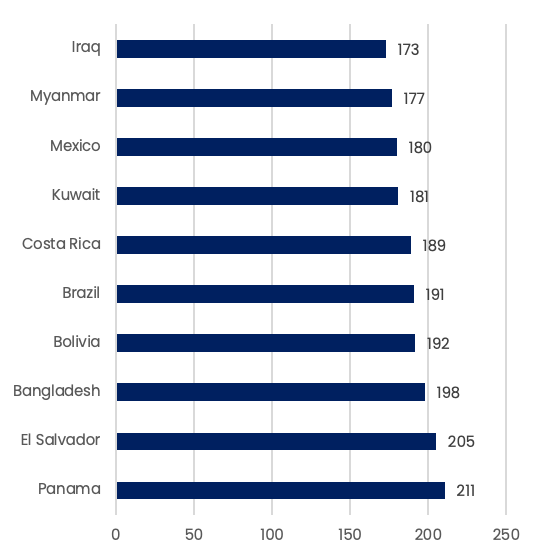
Source: Unicef, 2021 ** Between March 2020 and February 2021
At the global level, Covid-19 could result in a learning loss between 0.3 and 0.9 years of schooling, adjusted for quality.
(World Bank, 2020)
92% of children in grade 2, 89% in grade 3, 90% in
grade 4, 95% in grade 5, and 93% in grade 6 have lost at least one specific ability in language (reading, writing, oral communication) from the previous year.
In India, school closures have impacted around 250 million elementary and secondary school students. Among other impacts, this entails a huge loss in foundational learning.
(Unicef Press Release, 2021)
67% of children in grade 2, 76% in grade 3, 85% in grade 4, 89% in grade 5, and 89% in grade 6 have lost at least one specific ability in mathematics (arithmetic operations, data interpretation, understanding 2D/3D visuals, etc.) from the previous year.
School closures lead to disruption in instructional time, which can have the following effects:
Mitigates the impact of school closure on:
Part I: SOPs for Health, Hygiene& Safety
SOP and Safety protocols:
Part II: Learningwith Physical/Social Distancing

Source: Global Monitoring of School Closures, UNESCO
Children younger than 10 years are less likely than adults to transmit the virus, while older children may transmit it at levels similar to adults(Park et al, 2020)
Despite the evidence from developed countries, LMICs face a different set of challenges for mitigating health risks:
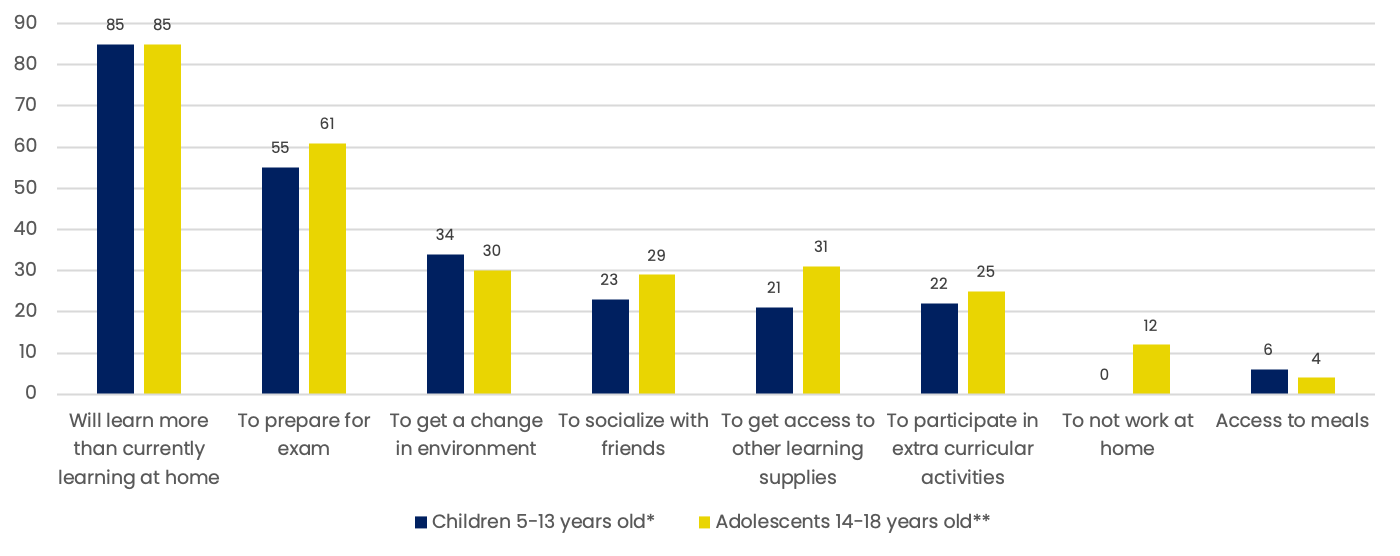
*N= 2774 **N=2003
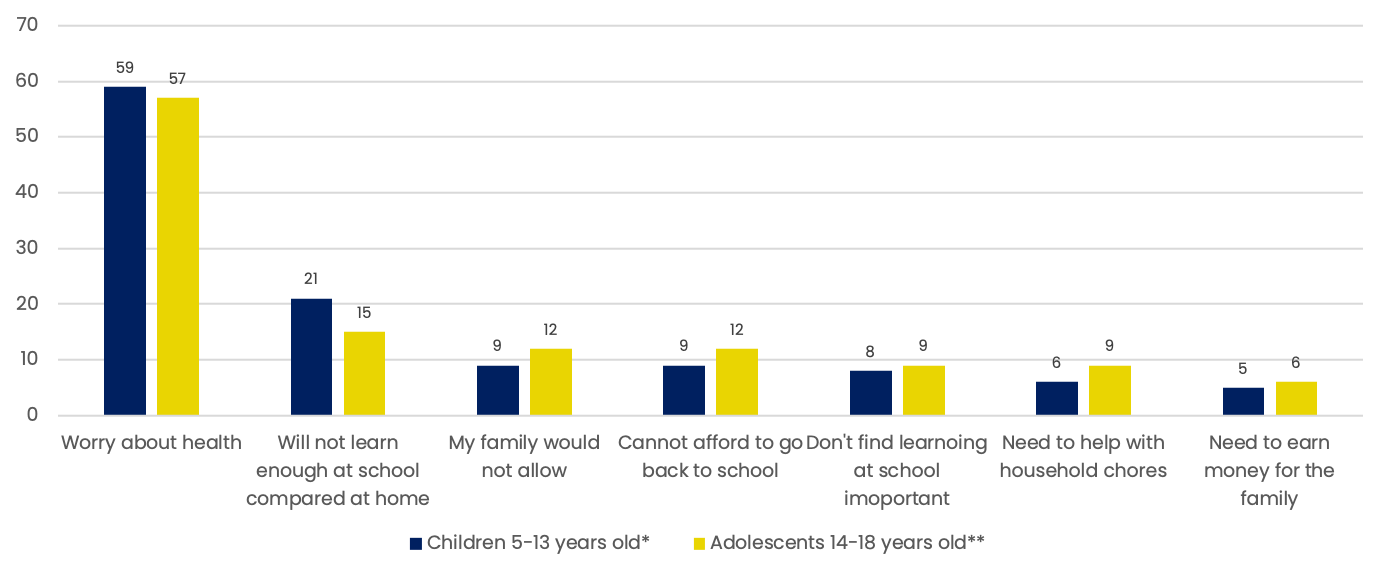
*N= 2774 **N=2003


Support required by teachers when schools re-open
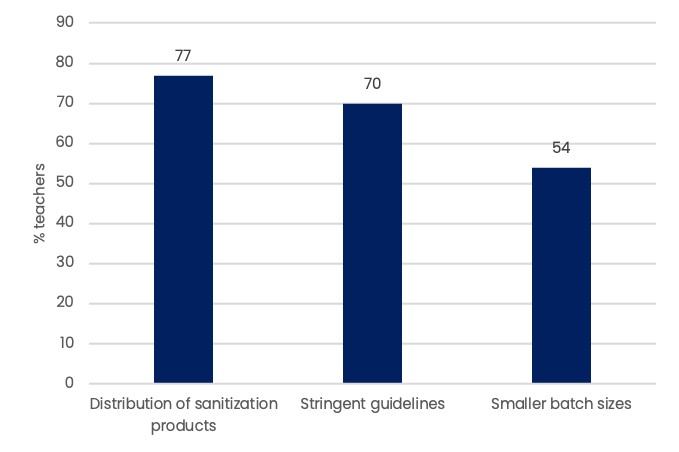
Support required by teachers to continueremote leaning
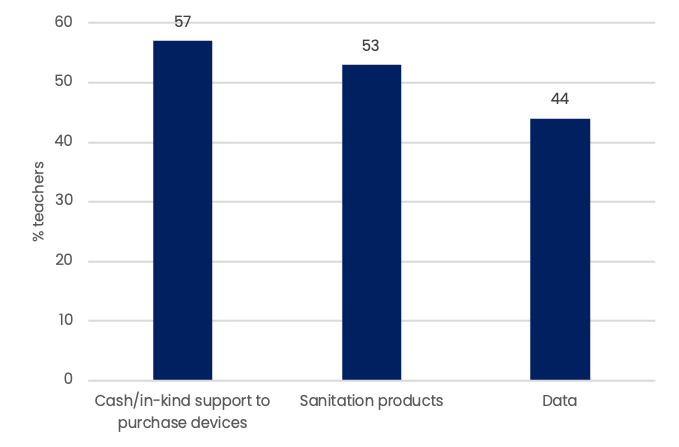
Complete lockdown wherepeople are confined to their homes
Complete lockdown wherepeople are confined to their homes
Complete lockdown wherepeople are confined to their homes
Complete lockdown wherepeople are confined to their homes
Only online learning material
Online + physical learning material
Online + physical learning material + community classes
Schools re-open in phased manner

Drinking water, functional toilets, and hand wash facilities will be essential as schools re-open safely. Only 52% of schools in India have overall WASH facilities.
(U-DISE, 2018)
Out of the total 15.1 lakh schools in India:




Vaccination of students, teachers, and staff is critical for the schools to re-open safely. While children are not yet eligible, As of 21st July, 2021, India has fully vaccinated approximately 8.5 crore adults, and 32.5 crore with the first dose. India has a total of 92 lakh teachers (62 lakh above 55 years) and 62 lakh support staff members.(MOHFW, 2021, May 22), (U-DISE, 2018)
Several students, who are now breadwinners for their families, have migrated to different cities, or cannot afford to return to school and are estimated to have dropped out
Gobally, 24 million students are estimated to have dropped out of schools because of the pandemic in 2020 (UNESCO, 2020)
Girls are at risk of early marriages, or required to help with domestic chores. In India, 10 million girls are at risk of dropping out of schools. (Frontline, The Hindu, 2020)
Announcement of guidelines of re-opening schools accompanied by sessions to answer questions and reassure parents of the safety of returning to schools
Flexibility: Enrolment allowed even after schoool re-opening, enrolment forms available online and at local kiosks near schools, along with extension of deadlines for submitting necessary documents
Nationwide media campaign: To increase awareness about re-opening schools
In 13 countries, UNICEF, in partnership with Airtel Africa, used mobile technology to transfer cash and encourage re-enrolment and online learning among families

Out of the total 15.1 lakh schools in India:
School closures in 2020 caused significant learning loss
Disruption caused by wave 2

Further school closures and learning loss
Loss of two years of education
92% and 82% of students of grades 2-6 have lost at least one specific ability in language and mathematics, respectively, from the previous year. (Azim Premji University, 2021)
More time
Increase the amount of instructional time to ensure appropriate learning through weekend school, extended school day, or summer school
Dedicated attention
Promote better attention to the learning material through tutoring, peer-to-peer learning, and break-out groups to improve quality of learning
Compressed content
Reduce or revise curriculum to focus on fundamental concepts within the same period
UNSECO, UNICEF and World Bank conducted a survey on National Education Responses to Covid-19School Closures in June-July2020. Of the 117 education systems that participated; 22% planned to increase class time when schools re-opened; 62% planned to introduce a dedicated remedial programme; and 60% planned to restructure the curriculum
Challenges in implementing remediation programmes
Global approaches towards remediation*
USA (Maryland)
Mozambique
France
The Philippines
Key features of remediation
responses of other countries
Rationale for re-opening
schools for early grades
on priority
Younger children (<9 years) are less susceptible to Covid-19 than 10-14 year olds (Goldstein et al., 2020)
Younger children are less likely to learn or retain what they have learnt through remote learning compared to adult learners (Kim, 2020)
Foundational learning in early grades form the basis of all learning and is crucial for development of human capital
To ensure universal FLN skills in primary schools by 2025 as envisaged in the NEP 2020
How learning levels will look like for children in the beginning of the grade
Grade 1
Grade 2
Grade 3
Grade 4
Grade 5



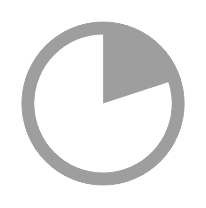

Fresh cohort: yet to join school
No classroom instruction at all
No classroom instruction at all
Loss of 2 years’ instruction.
Went to school in G-1
Loss of 2 years’ instruction.
Went to school in G-1&2


Need a strong 2-year bridging program to support students achieve FLN outcomes. Prioritised learning outcomes for 2 years.
Need strong and longer remediation on FLN and then year long bridging support. Prioritised learning outcomes for 2 years.
Suggestive cohort based multi-year restructured curriculum for Grade 1-3
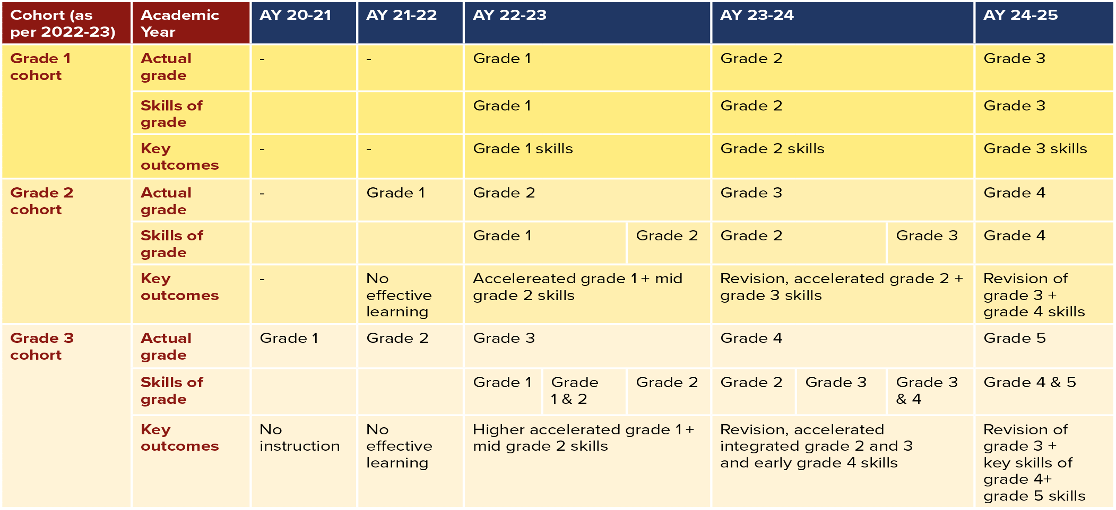

“...create an enabling environment to ensure universal acquisition of foundational literacy and numeracy, so that by 2026-27 every child achieves the desired learning competencies in reading, writing and numeracy at the end of Grade III and not later than Grade V” -NIPUN Bharat Vision
NIPUN Bharat Programme

Academic approaches
LO divided into 3 development goals: Goal 1-HW (Health and Wellbeing), Goal 2-EC(Effective Communicators), Goal 3-IL (Involved Learners)
Lakshya or Targets for Foundational Literacy and Numeracy
Learning Assessments (School Based, and Large-scale standardised assessment)
Pedagogy for creating inclusive classroom
Out of the to Empowering teachers through FLN specific training via NISHTHA
Expanding the scope and use of DIKSHA for FLN
3month play-based school preparation module
Academic approaches
Five-tier implementation mechanism for FLN Mission to be set up at theNational-State-District-Block-School level
Monitoring and information technology framework (Annual Monitoring Surveys and ConcurrentMonitoring)
Clear articulation of the role and responsibilities of States in achieving the FLNMission goals
Emphasises on the need for active involvement of Teachers, Parents, Community, and Local Bodies to achieve FLN Mission objectives
ASER. (2021). Annual Status ofEducation Report (Rural) 2020 Wave 1.
http://img.asercentre.org/docs/ASER%202021/ASER%202020%20wave%201%20-%20v2/aser2020wave1report_feb1.pdfAzim Premji University. (2020). Covid19 Livelihoods Phone Survey.
https://cse.azimpremjiuniversity.edu.in/cse-surveys/covid19-livelihoods-phone-survey/#About-Round-2Azim Premji University. (2021).Loss of Learning during the Pandemic.
https://apfstatic.s3.ap-south-1.amazonaws.com/s3fs-public/Field%20Studies%20-%20Loss%20of%20Learning%20during%20the%20Pandemic.pdf?o79JoTJTD1k6J2ax0go0unMO4vp.gJZNASER. (2021). Annual Status ofEducation Report (Rural) 2020 Wave 1.
http://img.asercentre.org/docs/ASER%202021/ASER%202020%20wave%201%20-%20v2/aser2020wave1report_feb1.pdfAzim Premji University. (2021,May). State of Working India.
https://cse.azimpremjiuniversity.edu.in/wp-content/uploads/2021/06/SWI2021_FullReport_1June.pdfBertrand, Krishnan, &Schofield. (2020). University of Chicago. How Are Indian Households Coping under Lockdown?
https://www.chicagobooth.edu/research/rustandy/blog/2020/how-are-indian-households-coping-under-the-covid19-lockdownBusinessLine. (2020, April 16). Sampark Foundation rolls out Baithak to ‘bring school to children’
https://www.thehindubusinessline.com/info-tech/sampark-foundation-rolls-out-baithak-to-bring-school-to-children/article31352684.eceCgschool. (2020).
http://www.cgschool.in/Bweducation. (2020, April). BrightTutee Collaborates With Rajasthan Government, Launches Free Digital LearningApp.
http://bweducation.businessworld.in/article/Bright-Tutee-Collaborates-Bweducation. (2020, October). ConveGenius Partners With Rajasthan Government And Aavas Foundation To Strengthen Home Learning Initiatives In Rajasthan.
http://bweducation.businessworld.in/article/ConveGenius-Partners-Cashman. (2019). Parental perceptions, family economic status and parental involvement in children’s learning and schooling in rural India.
https://www.educ.cam.ac.uk/centres/real/researchthemes/CBSE. (2020). Teacher Energized Resource Manuals
http://cbseacademic.nic.in/term.htmlCBSE. (2020). Teacher training on Augmented
Reality(AR).http://cbseacademic.nic.in/web_material/Circulars/2020/EY. (2019). A billion screens of opportunity
http://www.ioaa.co.in/images/EY-a-billion-screens-of-opportunity.pdfExpress computer. (2020, May 26). NIC’sCricket as an Assessment Tool makes e-learning ‘fun every day
https://www.expresscomputer.in/artificial-intelligence-ai/nics-cricket-as-an-assessment-tool-makes-e-learning-fun-every-day/56712/Financial Express. (2021). NewEducation Policy: Solidifying the Foundation for Learning.
https://www.financialexpress.com/education-2/new-education-policy-CRY. (2020). Impact of Covid-19 onSchool Education in India: What are the Budgetary
Implications?.https://www.cbgaindia.org/wp-content/uploads/2020/09/Impact-of-Covid-19-on-School-Education-in-India.pdfDainik Bhaskar. (2020). 'Come learn at home' program starts every day at 9 am, teachers provide teaching material to children on social media.
https://www.bhaskar.com/local/rajasthan/nagaur/news/come-learn-at-home-program-starts-every-day-at-9-am-teachers-provide-teaching-material-to-children-on-social-media-127922978.htmlDigital learning. (2020, April24). iDream Education launches learning App for 1st to 12th classes.
https://digitallearning.eletsonline.com/2020/04/idream-education-launches-learning-app-for-1st-to-12th-classes/ETGovernment. (2020, April 15). DigitalLearning: Rajasthan Govt launches ‘SMILE’ for e-learning at school.
https://government.economictimes.indiatimes.com/news/digital-india/digital-learning-rajasthan-govt-launches-smile-for-e-learning-at-school/75161364ETGovernment. (2020, April 22). DigitalLearning: Uttarakhand government using ‘Sampark Didi’ app to impart virtual classes.
https://government.economictimes.indiatimes.com/news/digital-india/digital-learning-uttarakhand-government-using-sampark-didi-app-to-impart-virtual-classes/75286632Hindustan Times. (2020).Haryana unlocks school at home campaign for students amid Covid-19 lockdown.
https://www.hindustantimes.com/cities/haryana-unlocks-school-at-home-campaign-for-students-amid-covid-19-lockdown/story-sbFD2pfJkKCFmPEGmhsX6H.htmlHindustan Times. (2020, July). 40-minute‘ remedial class’ daily in all UP govt primary schools
https://www.hindustantimes.com/education/40-minute-remedial-class-daily-in-all-up-govt-primary-schools/story-7smhmnvCCP5bq5xmNYpC5N.htmlFrontline-The Hindu. (2020). 10million girls at risk of dropping out of school because of the Covid-19 pandemic: RTE Forum.
https://frontline.thehindu.com/dispatches/10-million-girls-at-risk-of-dropping-out-of-school-because-of-the-covid-19-pandemic-says-rte-forum-policy-brief/article33662229.eceGovernment of India. (2017).Saubhagya Dashboard.
https://saubhagya.gov.in/GSMA-Dalberg. (2017).Accelerating Affordable Smartphone Ownership in Emerging Markets.
https://www.gsma.com/mobilefordevelopment/wp-content/uploads/2018/08/Accelerating-affordable-smartphone-ownership-in-emerging-markets-2017_we.pdfIndiaeducationdiary. (2020,September). ConveGenius Launches Assessment Bots In Madhya Pradesh For Data-DrivenLearning; Reaches Out To 15 Lakh Students In The First Month.
https://indiaeducationdiary.in/convegenius-launches-assessment-bots-in-madhya-pradesh-for-data-driven-learning-reaches-out-to-15-lakh-students-in-the-first-month/India Today. (2020, July 4). Delhi Govt launches LEAD portal to make online learning easy
https://www.indiatoday.in/education-today/news/story/delhi-government-launches-lead-portal-to-make-online-learning-easy-1697020-2020-07-04India Today. (2020, November). How pandemic devoured poor children's superfood.
https://www.indiatoday.in/india/story/how-coronavirus-pandemic-devoured-poor-children-s-superfood-mid-day-meal-1741607-2020-11-17Indian Express. (2020, October 13). Gujarat: Govt asks teachers to be corona warriors, undergo online home learning training.
https://indianexpress.com/article/cities/ahmedabad/gujarat-corona-warriors-training-6723729/Hindustan Times. (2021). Bihar:Students to learn regional languages, environment during catch-up classes.
https://www.hindustantimes.com/education/news/bihar-students-to-learn-IAMAI. (2019). Digital in
Indiahttps://cms.iamai.in/Content/ResearchPapers/2286f4d7-424f-ice360. (2016).
http://www.ice360.in/en/projects/homepageservey/88-of-households-Iftikhar, F. (2021, February 3).166k students in Delhi fell off grid as schools moved online. Hindustan Times.
https://www.hindustantimes.com/cities/delhi-news/166k-students-in-delhi-Insight success. (2020).ConveGenius launches #EdtechforNayaBharat.
https://www.insightssuccess.in/convegenius-launches-edtechfornayabharat-Madhi. (2020). Covid Response.
https://www.madhifoundation.org/our-projects/#covid-responseMHRD. (2020). India ReportDigital Education.
https://www.education.gov.in/sites/upload_files/mhrd/files/India_Report_MHRD. (2020). Pragyataguidelines.
https://www.education.gov.in/sites/upload_files/mhrd/files/pragyata-guidelines_0.pdfMillenniumpost. (2021). RocketLearning.
http://www.millenniumpost.in/opinion/rocket-learning-431507MOHFW. (2021, May 22). CumulativeCoverage of Covid Vaccination.
https://www.mohfw.gov.in/pdf/CumulativeCovidVaccinationIndian Express. (2021, February 13). Over 56 lakh school teachers to be trained through NISHTHA in 2021-2022.
https://indianexpress.com/article/education/over-56-lakh-school-teachers-to-be-trained-through-nishtha-in-2021-2022-7186791/NCERT. (2020). Alternative academic calendar.
https://ncert.nic.in/alternative-academic-calendar.phpNCERT. (2020). Learning enhancement guidelines.
https://ncert.nic.in/pdf/announcement/Learning_%20Enhancement_NSSO. (2019). Key Indicators ofHousehold Social Consumption on Education in India.
http://mospi.nic.in/sites/default/files/publication_reports/Oxfam. (2020). Status Report-Government and private schools during Covid-19.
https://www.oxfamindia.org/sites/default/files/2020-09/Status%20report%20Government%20and%20private%Prabhat Khabar. (2020). In Jharkhand, students of class 1 to 12 will have to study sitting at home, CM Hemant Soren will launch this app today.
https://www.prabhatkhabar.com/state/jharkhand/ranchi/jharkhand-students-from-class-one-to-12th-easy-to-study-home-cm-hemant-soren-launch-jharkhand-education-project-council-larnetics-app-digi-school-learning-material-whatsappdigital-content-online-study-coronavirus-grjThe Logical Indian. (2021, March).This EdTech Platform Is Using AI To Teach Students From UnderprivilegedBackground.
https://thelogicalindian.com/smb-stories/convegenius-using-ai-to-teach-kids-27213TRAI. (2020).Highlights of telecom subscription.
https://www.trai.gov.in/sites/default/files/PR_No.101of2020.pdfMinistry of Rural Development.(2019). Mission Antyodaya.
https://missionantyodaya.nic.in/ma2019/preloginStateRuralElectricityPew Research Center. (2019). SmartphoneOwnership Is Growing Rapidly Around the World, but Not Always Equally.
https://www.pewresearch.org/global/2019/02/05/smartphone-ownershipRajshaladarpan. (2020).
https://rajshaladarpan.nic.in/shalasamvad/Home/Homepage.aspxStatista. (2019). Television market in India- statistics & facts.
https://www.statista.com/topics/4852/television-market-in-india/#dossierSummaryTárraga García, V., García Fernández, B., & Ruiz-Gallardo, J. R. (2017). Home-based family involvement and academic achievement: a case study in primary education. EducationalStudies, 44(3), 361–375.
https://doi.org/10.1080/03055698.2017.1373636The Hindu. (2021). Average dropout rate of girls recorded at 17.3% at secondary level in 2018-19: WCDMinistry.
https://www.thehindu.com/news/national/average-dropout-rate-of-girlsUNICEF. (2021, January). Covid-19: Missing More Than a ClassroomThe impact of school closures on children’s nutrition.
https://www.unicef-irc.org/publications/pdf/Covid-19_Missing_More_Than_a_Classroom_The_impact_of_school_closures_onUNICEF. (2021, March). Covid-19and School Closures
https://data.unicef.org/wp-content/uploads/2021/03/Covid19-and-school-closures-report.pdfUNICEF. (2021, May).Rapid assessment of learning during school closures in the context of covid
https://www.unicef.org/india/reports/rapid-assessment-learning-during-school-closures-context-covid-19U-DISE. (2018). Flash Statistics.
http://udise.in/Downloads/Publications/Documents/Flash_UNESCO (2020). Covid-19 Response-Re-enrollment.
https://en.unesco.org/sites/default/files/unesco-covid-19-UNESCO & Mckinsey. (2020). Covid-19 Response-Remediation.
https://www.mckinsey.com/~/media/McKinsey/About%20Us/World Bank. (2020). Simulating the Potential Impacts of Covid-19 School Closures on Schooling andLearning Outcomes.
https://openknowledge.worldbank.org/bitstream/handle/10986/33945/Simulating-the-Potential-Impacts-of-Covid-19-School-Closures-on-Schooling-and-Learning-Outcomes-A-Set-of-Global-Estimates.pdf?sequence=1&isAllowed=yWorld Bank. (2020, October).Human Capital Index.
https://databank.worldbank.org/data/download/hci/HCI_2pager_IND.pdf?cid=GGH_e_hcpexternal_en_extYehaindia. (2020, August 6). Saarthi Education- A step towards inclusive education.
https://yehaindia.com/saarthi-education-a-step-towards-inclusive-education/